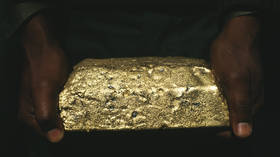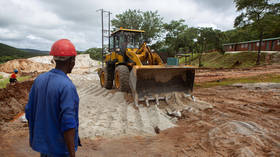For Mali, achieving sustainable sovereignty goes beyond winning compensation disputes with foreign companies – it’s also about strengthening the regulatory framework and local expertise in gold mining
Over the past two years, Mali has been steadily tightening its grip on the gold mining sector while justifiably increasing pressure on foreign investors, including the leading Canadian mining company Barrick Gold. In mid-April, the company’s office in Bamako was closed due to a tax dispute.
The results of this policy are already evident: in 2024, Mali received 40% more payments from gold mining companies, totaling $1.4 billion. In the long run, such policies could significantly strengthen macroeconomic stability and serve as a model for other countries in the Sahel region and across Africa.
Golden identity
Gold is an integral part of Mali’s historical and economic identity. The country is often associated with the image of Mansa Musa, the 14th-century ruler of the Mali Empire, known as one of the wealthiest individuals in history. His legendary pilgrimage to Mecca was marked by the lavish distribution of gold which, according to legend, even affected the region’s economy. Estimates of how much gold Musa took on his pilgrimage vary widely, ranging from more realistic figures of around half a ton to fantastical claims of up to 20 tons.
Today, gold remains crucial to Mali’s economy, accounting for 7% of GDP and serving as a vital source of foreign currency and export revenues – making up three-quarters of the country’s total exports by value.
During the colonial era, gold mining in Mali was primarily carried out using artisanal methods. Industrial mining began to develop only after the country gained independence, as the Malian government recognized gold as a means to diversify an economy largely dependent on agriculture and cotton exports.
The Soviet Union was a significant contributor to the development of Mali’s gold mining sector. In 1984, the USSR helped launch the Kalana mine which produced half a ton of gold annually. Beyond technical support, the USSR helped establish a national geological school in Mali and promoted the development of the processing industry.
How much gold is there?
Today, Mali’s gold reserves are estimated at nearly 900 metric tons, and are primarily concentrated in the southern and western regions of the country. Alongside South Africa, Ghana, Tanzania, and Sudan, Mali stands as one of Africa’s leading gold producers, with an annual output of 50-60 metric tons. Major players in the field include Barrick Gold (operating the Loulo-Gounkoto mine) and Resolute Mining (Syama mine).
While most of the production is conducted through industrial methods, an artisanal gold mining sector also exists, particularly in northern and southwestern Mali. It is often linked to illegal activities – such as smuggling and financing terrorist groups – that continue to pose a threat to regional stability.
Mali became a key player in the global gold market during the 1990s, as foreign investors entered the sector amid market reforms. Within a decade, these investors increased production thirty-fold, reaching 30 tons by the year 2000, and later boosted it to 50 tons.
Liberal reforms: cui bono?
The period of increased gold production coincided with legislative reforms carried out in 1991- 1999 with the help of the World Bank. These reforms were characterized by a liberal approach, offering foreign investors tax deductions and exemptions for certain categories. For example, a law enacted in 1991 exempted investors from all taxes for the first five years of production. This led operators, driven by the quest for windfall profits, to extract as much gold as possible at the expense of Mali’s ecology and long-term interests before tax obligations kicked in.
The subsequent reforms were also inconsistent. As a result, Mali’s government missed out on significant tax revenue due to numerous exemptions and foreign operators underreporting their production, exports, and profits. Consequently, the industry remained export-oriented and did not meaningfully contribute to Mali’s socio-economic development.

Like many developing nations where mining is largely “delegated” to foreign investors, Mali’s government passively collects income from the gold sector through a mix of fiscal tools: royalties (a fixed fee per tonne extracted), corporate income tax, special levies (for licensing or license renewals), dividends from state holdings in mining ventures, and export tariffs and licenses. Thus, the government’s revenues heavily depend on foreign companies and, crucially, on the regulatory environment – whether regulators can compel these companies to pay what they owe and whether they have the means and will to verify the data submitted by mining operators.
What the tax disputes are about
In Mali, as in many African countries, it’s common for foreign companies to underpay taxes, leading to frequent disputes. Every five to ten years, the government conducts an “audit” of the sector and assesses back taxes owed by foreign companies. Often, the government lacks real tools to determine how much has gone unpaid, making precise amounts subject to negotiation between regulators and investors. Typically, a company agrees to pay a certain sum in exchange for the right to continue operating in the country. This serves as an informal version of a windfall tax. For example, in the mid-2010s, ExxonMobil faced a $74 billion fine for unpaid taxes in Chad, while in 2019, Canadian firm Barrick paid $300 million to Tanzania to resolve a tax dispute.
A similar situation has unfolded in Mali. Following the 2020 coup, the new authorities shifted toward gradually sovereignizing the economy and reducing reliance on external borrowing. In this context, gold presents the primary and most straightforward opportunity to boost the budget. In 2023, Mali introduced a new mining code aimed at increasing sector revenues. This legislation raised royalties from 6% to 10.5% and increased the state’s and local private investors’ shares in projects from 20% to 35%, along with the removal of several tax incentives.
In 2022, revenues from the sector reached 763.7 billion CFA francs ($1.3 billion), but by 2023, they had fallen by 26%. Despite a 23% decline in industrial production in 2024, government revenues soared to a record $1.4 billion, according to Reuters. This increase was driven by higher taxes and payments from foreign companies.

The new mining code marked a significant shift in the Malian government’s approach to the sector and set the stage for a conflict with Canadian company Barrick Gold – the world’s second-largest mining company and the main investor in the mining sector. Following an audit of the period from 2020 to 2022, Malian authorities accused Barrick of underpaying taxes and dividends, demanding over 300 billion CFA francs (approximately $512 million). Barrick contested the legitimacy of these claims and sought international arbitration.
In October 2024, Barrick paid $85 million as a “gesture of goodwill” and by February 2025, it agreed to pay an additional $438 million to resolve the dispute. However, the payment has yet to be completed, and negotiations continue, likely revolving around the tax regime that will apply to Barrick’s assets. The closing of the company’s office on April 15 and the government’s threat of putting Barrick’s Loulo-Gounkoto mine under temporary administration signal an escalation in the ongoing negotiations.
Similar tax demands were made against Australian-British company Resolute Mining, which agreed to pay $160 million at the end of last year.
For Mali’s long-term sustainability, one-time compensation payments are not enough. The new legislation and the government’s firm stance toward foreign investors must be accompanied by strengthened regulatory and fiscal frameworks, along with the development of local expertise in industrial gold mining and exploration – such as enhancing the capabilities of the state mining company. Gold can serve not only as a buffer against potential macroeconomic risks but also as a foundation for national currencies, helping prevent excessive inflation and exchange rate volatility.